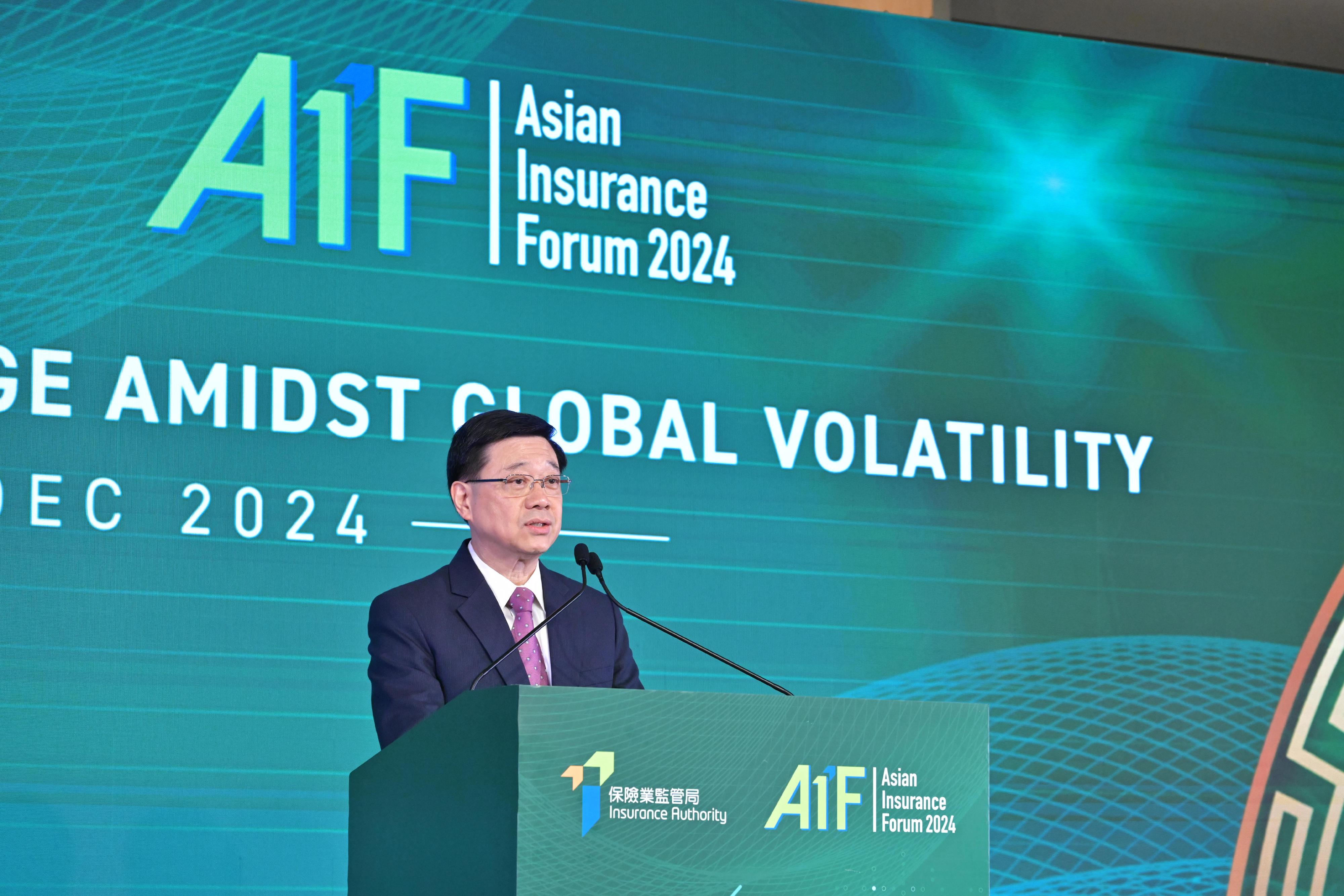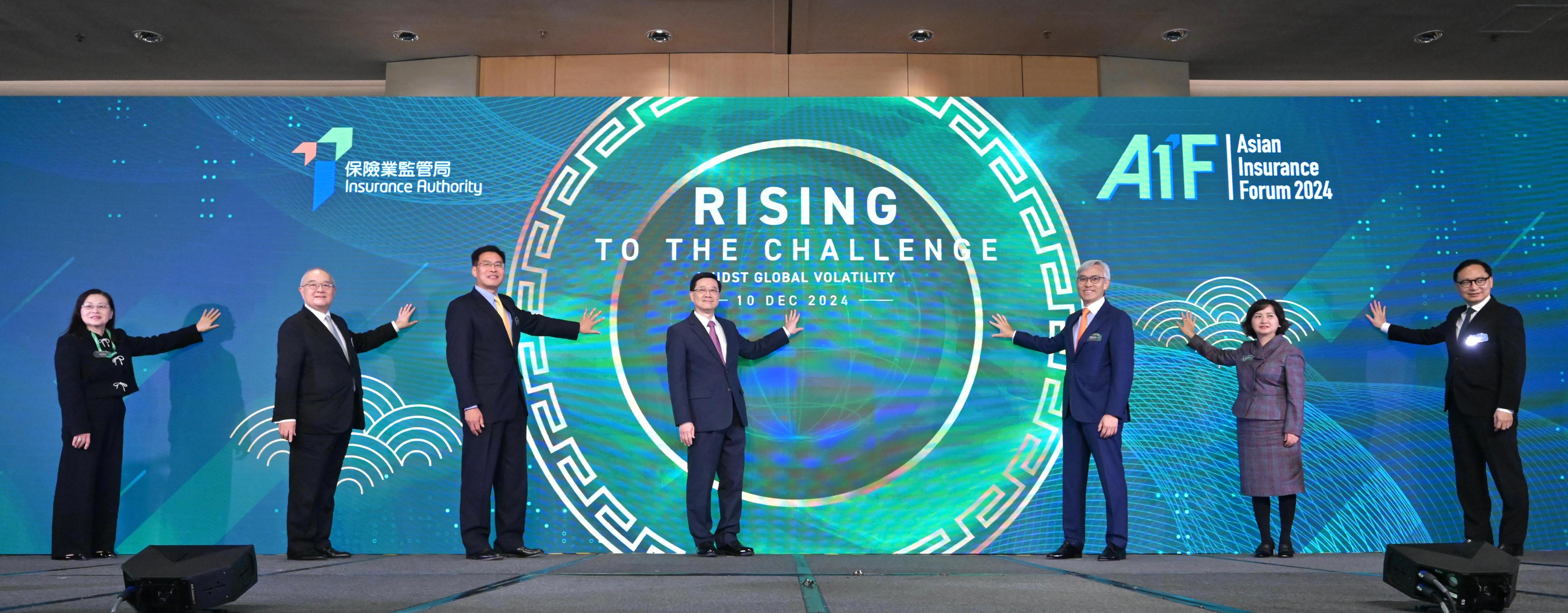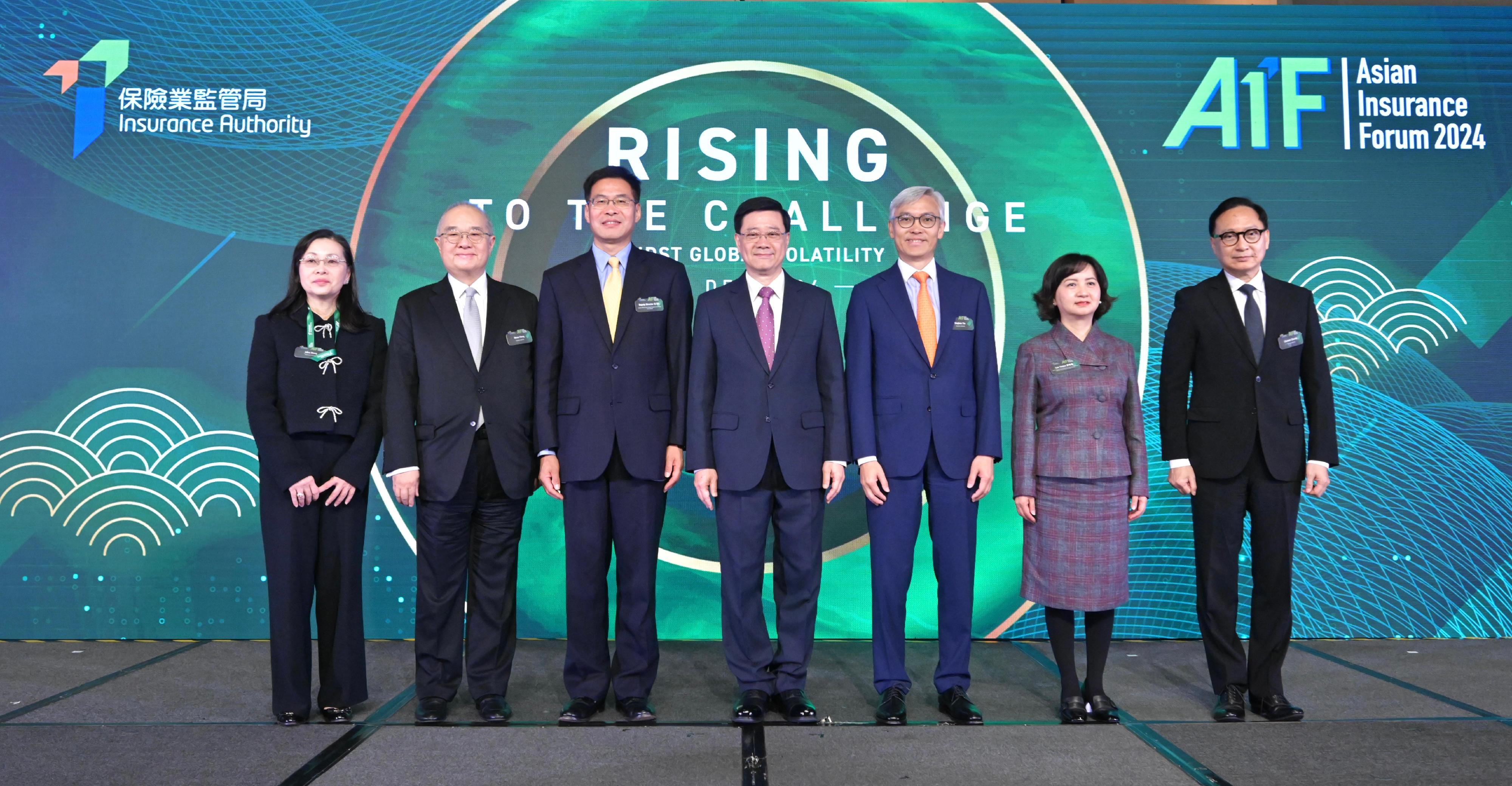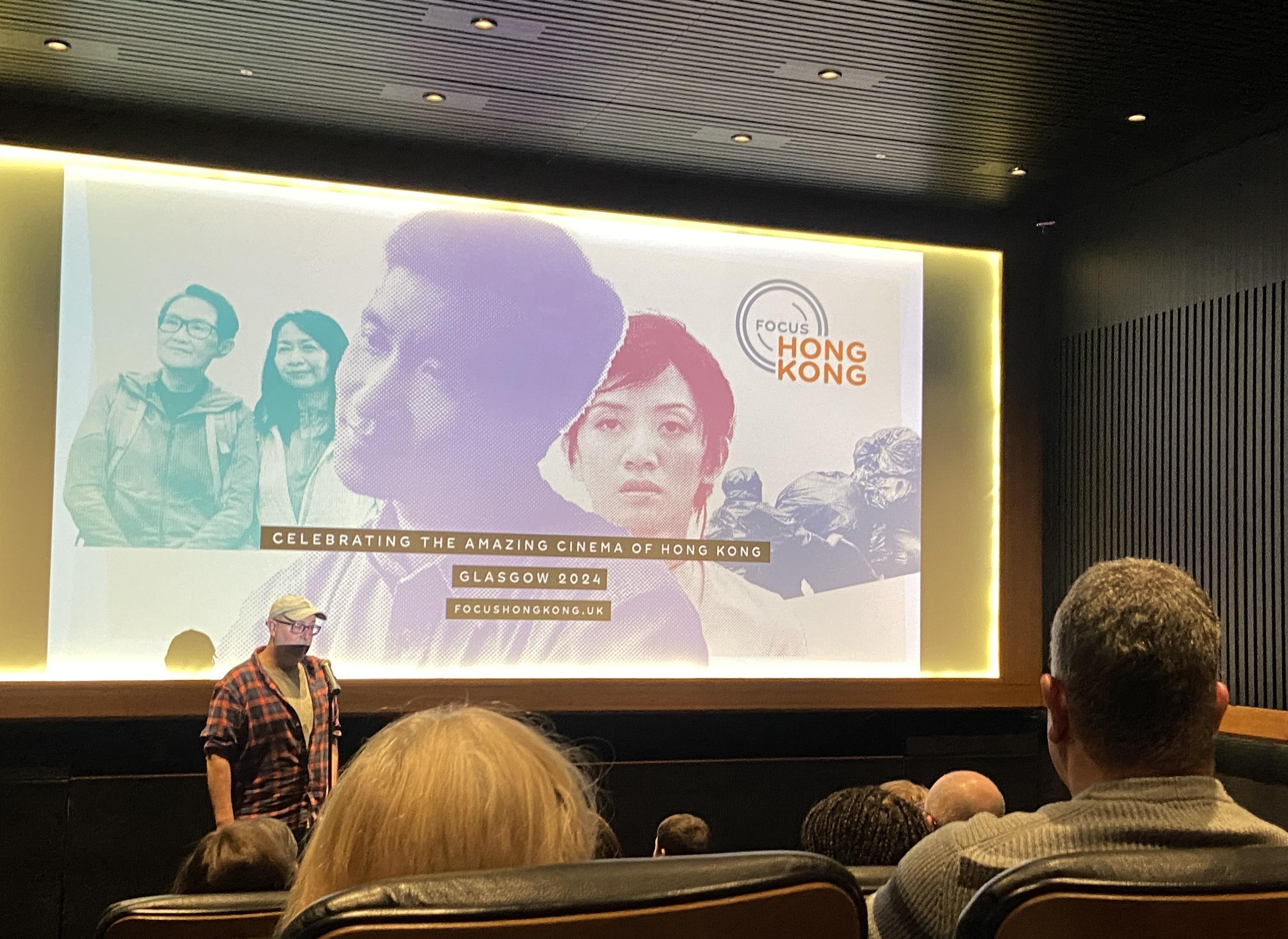Following is the speech by the Chief Executive, Mr John Lee, at the Asian Insurance Forum 2024 today (December 10):
Deputy Director Qi Bin (Deputy Director of the Liaison Office of the Central People's Government in the Hong Kong Special Administrative Region), Mr Stephen Yiu (Chairman of the Insurance Authority), Mr Clement Cheung (Chief Executive Officer of the Insurance Authority), distinguished guests, ladies and gentlemen,
Good morning. And welcome to the Asian Insurance Forum, the seventh edition.
It is a pleasure to be here, once again, for the opening of this Forum, which brings together more than 400 high-profile professionals from the insurance industry, as well as the banking and asset management sector, regulators, law enforcement agencies and related organisations. Another 1 800 or so are joining us online.
And I'm pleased to note that association and institutional leaders from the Mainland and a number of countries are here with us as well. We look forward to your insights in this international gathering.
Ladies and gentlemen, Hong Kong is the perfect venue for discussions like the one we are having today. Under the "one country, two systems" principle, Hong Kong is a city that converges both the China advantage and the global advantage. We enjoy world-class infrastructure, a strategic location, as well as robust regulatory environment.
As one of the world's top three global financial centres, and a hub for asset and risk management, Hong Kong plays a pivotal role in leading the development of insurance across the region and beyond.
In the face of an increasingly volatile global environment – marked by economic uncertainty, shifting geopolitical dynamics and the accelerating impacts of climate change – the insurance industry's role has never been more significant.
Hong Kong has always been a key player in managing risk on the global stage. We continue to attract the world's most prominent insurers, reinsurers and investors. Hong Kong is home to about 160 authorised insurers, including six of the world's top 10 insurance firms.
In addition, three international insurance groups have chosen Hong Kong as their group supervision base, a compelling demonstration of Hong Kong's advantages as an international financial centre and insurance hub.
With the highest insurance penetration in the world, Hong Kong remains a model for the integration of financial services, regulatory transparency and market access.
More than a reflection of our times, this year's Forum theme, "Rising to the Challenge amidst Global Volatility", is a call to action for the industry.
For the next few minutes, allow me to highlight a few areas in which Hong Kong is making substantial impact in response to global uncertainties.
Climate change is among our greatest challenges.
And the insurance industry has a critical role to play in addressing the risks of climate change. Hong Kong, I can confidently assure you, is at the forefront in developing solutions.
Through initiatives such as insurance-linked securities and catastrophe bonds, we provide vital risk mitigation responses to companies and governments facing climate challenges.
To date, Hong Kong has issued five catastrophe bonds, raising more than 700 million US Dollars for protection against typhoons, earthquakes and other natural disasters.
Technological innovation will be a key enabler of insurance industry growth.
In this regard, we are committed to supporting Insurtech and digital transformation.
Through the Insurtech Sandbox, the Open API Framework and other programmes, the Insurance Authority is building an environment conducive to innovation. These initiatives allow insurance providers to experiment with new business models, explore digital products and enhance customer experience in ways that were previously unimaginable.
Hong Kong's fast-evolving insurtech business is helping the industry embrace artificial intelligence, data analytics and blockchain, bringing tangible improvements to businesses as well as consumers.
The Guangdong-Hong Kong-Macao Greater Bay Area presents a far-reaching opportunity for Hong Kong to lead regional integration, facilitating mutual access to insurance markets and enabling smoother mobility of people and capital across the region. Last year's implementation of the "unilateral recognition" policy, allowing cross-boundary motor insurance to tie in with northbound travel for Hong Kong vehicles, is a striking example of insurance co-operation enhancing connectivity in the Greater Bay Area.
And I know that many companies are tapping the boundless promise of the Greater Bay Area, and elsewhere in the Mainland, seeing insurance need, and business opportunity – long-term opportunity – in the increasing numbers of Hong Kong people retiring there. I encourage you to explore innovative, cross-boundary insurance products that can meet the needs of people and businesses right across the region.
Talent development is critical to the insurance industry's future.
And initiatives such as the Programme to Enhance Talent Training for the Insurance Sector, have been instrumental in providing young professionals with valuable skills and experience.
To date, we have provided internship opportunities for some 580 students and trained more than 18 500 participants.
In my Policy Address delivered in October, I reaffirmed Hong Kong's commitment to becoming a leading global risk management centre.
In the coming year, the Insurance Authority will review capital requirements for infrastructure investment. The review is designed to help insurance companies diversify their assets and support large-scale projects.
We will also continue to invite Mainland and overseas enterprises to establish captive insurers in Hong Kong.
Through these and other innovative efforts, Hong Kong is well on its way to becoming an even more attractive destination for insurance and risk management.
The Insurance Authority has also played a steadfast role in enforcement, which is pivotal to ensuring the industry’s healthy and sustainable development.
At the same time, it is a trusted industry partner, encouraging development and helping insurers navigate emerging trends and challenges.
Hong Kong is well-positioned to take on these challenges, to lead the way in developing responses that address the pressing issues facing our industry today.
I am grateful for the Insurance Authority's stewardship, capacity building of this critically important industry, for steering it on a course to long-term progress for insurance, for our economy and for the community of Hong Kong.
That, as Stephen mentioned just a few minutes ago, includes successfully bidding to have Hong Kong host the 2026 annual general meeting and conference of the International Association of Insurance Supervisors. Well done. Hong Kong is ready, and looks forward, to hosting the world's financial professionals, and providing the exchange and connectivity platform for all.
My thanks, too, to the Insurance Authority for organising the Asian Insurance Forum, an essential annual gathering of insurance and financial sector leaders from Hong Kong, the region and beyond.
Ladies and gentlemen, I wish you a rewarding Forum and the best of business and health in the coming year.
Thank you.



